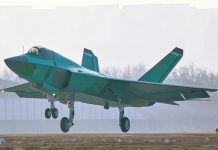Amid the COVID-19 coronavirus pandemic, city-state Singapore is accelerating its plan to increase its farming capacity and capability to enhance its food security. Singapore which has 5.7 million people crammed into a tiny space of 720 square kilometres, currently produces only 10 per cent of its food requirements.
Land is scarce in Singapore and expensive and so is labour. To achieve its “30 by 30” plan, it will not be developing farms in the traditional sense in rural areas but go high-tech and vertical. “30 by 30” is a programme that aims for Singapore’s agri-food industry to locally produce 30 per cent of its nutritional needs by the year 2030.
Currently, less than one per cent of Singapore’s land is being used for farming. With real estate at a premium, one of the solutions is to utilise the rooftops of building and car parks to grow vegetables.
In May, a tender was put up by the Singapore Food Agency (SFA) to launch nine sites at the rooftops of public housing multi-storey car parks to be used to farm vegetables and other food crops.
Earlier, the Singapore Food Agency (SFA) announced that the government will be providing SGD30 million (USD21 million) in grants to support the agri-food industry to ramp up local production of eggs, leafy vegetables and fish in the next 6 to 24 months. It will co-fund up to 85 per cent of costs of viable and qualified projects.
SFA said in a statement that: “the current COVID-19 situation underscores the importance of local food production, as part of Singapore’s strategies to ensure food security. Local food production mitigates our reliance on imports and provides a buffer in the event of food supply disruptions.”
The coronavirus pandemic made Singapore residents acutely aware of the importance of food security. When borders started to close around the world, supermarket shelves were cleared of food due to waves of panic buying. For a brief period, there was fear that Singapore will run out of food.
This fear is not unfounded as Singapore imports about 90 per cent of its food. Rapid industrialisation, urbanisation and population growth in the 1970s and 80s resulted in farms being cleared for housing, factories and offices.
However, over the years, the Singapore government being acutely aware of its food vulnerability and has diversified food sources. According to the World Bank, Singapore imports food from over 150 countries.
For example, although Singapore mainly imports rice from Thailand, it also imports the food staple from another eight or more countries. In fact, India briefly overtook Thailand as the top supplier of rice to Singapore in 2013.
As another example, pork and poultry is imported from more than 8 different countries from as far away as Spain, US, Brazil, and the Netherlands.
In 2018, Singapore topped the Economist Intelligence Unit’s (EIU) Global Food Security Index of 113 countries for the first time, scoring high on measures such as affordability, availability and safety.
However, as the country imports such a large portion of its food, its food security is susceptible to various risks like crop and animal diseases, climate change events like drought or monsoons as well as political and policy changes in countries which exports food to the country.
Over the longer-term, Singapore has a three-pronged tactic to achieve greater food security. They are to diversify the nation’s food sources, support companies to grow overseas and boost domestic production.
Currently, Singapore produces 7 per cent of the vegetables it consumes, 8 per cent of the fish and 25 per cent of the eggs. In the coming years, it is aiming to raise these numbers to 10 per cent, 15 per cent, and 30 per cent, respectively.
A spokesman for SFA was quoted by Channel NewsAsia as saying, “we envisage farming to become more like manufacturing – where production takes place within a controlled environment with a defined input. The result is an assured and consistent output, and a predictable way to address the effects of climate change and extreme weather.”
Farming on the rooftops of buildings in Singapore is not new. It has been around for some years.
Among the pioneers are ComCrop and Edible Garden City (EGC).
EGC started by helping restaurants build small farms to supply fresh produce for their kitchens. It has now over 200 farms of various sizes including one for “Farm to Beauty” a skincare company that is creating products out of organic herbs and plants grown on top of the popular downtown mall and hotel complex, Raffles City. It has also developed a small rooftop farm for NOKA, a Japanese restaurant in Funan Mall which is close to Clarke Quay.
ComCrop has full fledge farms with a total area of 3,500 square metres on rooftops in Woodlands which is a suburban area in the outskirts of the city and also a smaller 600 square metre farm on top of SCAPE which is a mall in the famous Orchard Road shopping belt. The latter farm grows leafy greens and herbs such as basil and peppermint that is supplied to nearby restaurants and shops.
Most of these rooftop farms make use of vertical racks to save space, uses hydroponics or aquaponics technology, and at the same time are pesticide-free. Plants grown using hydroponics or aquaponics do not require soil.
Next time you are in Singapore, look up at the top of the buildings surrounding you. If you spot plenty of greenery on the roof, there could well be the site of a farm.
Asian News International




